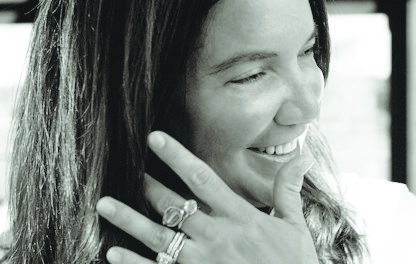
Donald Wright
The playground at the Hagerstown, Indiana, elementary school, in the early 1950s, had a touch of the O.K. Corral to it. During recess, tough-acting fifth and sixth graders would swagger around the grounds surrounding the two-story, rough-stucco building, looking for action. Their game wasn’t gunplay; it was marbles. They’d walk, twirling their bag of catseyes and alleys, looking for opponents, much as the Earp brothers must have twirled their six-shooters as they pursued the Clantons in 1880s Tombstone.
Like the residents of Tombstone, folks in Hagerstown “didn’t want no trouble.” It was a town of 1,800 residents in the heart of Hoosier corn-and-hog country. Most of the students rode school busses, some for as long as an hour each way from farmstead to town and back, and the boys emerged at the school grounds, lunch pail in one hand and bag of marbles in the other, ready for action.
Morning and afternoon recesses were prime times for marbles. Spying another boy with a bag, a challenger might approach and ask, “Wanta go for ‘keepsies’?”—meaning engaging in a game of keeping any of your opponent’s marbles that you were able to knock out of a circle, drawn in the playground’s packed dirt, with your shooter. If the other boy’s confidence was high, he might answer, “Sure, but no ‘quitsies’.” This would insure that once the game had begun, a player not liking the lay of his marbles or the prospect of losing a prized steely or aggie couldn’t declare the game over before the perceived harm was done or the bell for ending recess had tolled.
“Okay,” the challenger might say, “and no hoisties, no cleansies!” The former meant a player wasn’t allowed to lift, or hoist, his shooter into the air, enabling him to flip it over an obstacle—one of his own marbles, say, or a small stone remaining in the circle after its preparation—lying between his shooter and his opponent’s marble. Normally the person shooting had to “knuckle down”—that is, keep a knuckle of his shooting hand on the ground at the edge of the ring. And “no cleansies” meant the shooter would not be allowed to take the flat of his hand and brush away small bits of gravel or otherwise cleanse the path between his shooting hand and the intended target.
With rules set, the game was on. Someone would draw the circle, about a yard in diameter, and do a perfunctory job of clearing bits of gravel and smoothing the ground inside it. Each player would then scatter a predetermined number of his marbles around the ring, with arguments arising over the quality of the marbles offered up: “C’mon, man; I throw in my best tiger and a Popeye; you have old clays and a glassie.” Somehow, such things got worked out. Each player then flipped a fat shooter at a designated object several feet away, the one getting closer awarded the first shot.
Once begun, games moved quickly. A player knocking an opponent’s marble out of the ring got to keep it and continue shooting until either he failed to do so or had collected all of his adversary’s offerings. Then, the other player had at it, often with the advantage of having fewer of his own marbles in the ring as obstacles to his shooting.
Naturally, victory was sweet, while players suffered defeat visibly. Everyone on the playground knew what it meant to “act like you’ve lost all your marbles.” Most had witnessed someone doing so.
As most boys, I treasured my marbles, but my skills were lacking. My hands were so small that I could barely fit a shooter into the crook of my index finger for flipping with my thumb. Knuckling down for a shot and then having the shooter roll meekly out of my grip and into the ring was an embarrassment. Mostly I watched the games of older guys, ready to nod appreciably when a contestant went on a nice run or console a friend after a bitter defeat.
My playground prospects changed dramatically in fourth grade. First, Barbara Bavender, a curly-haired, nine-year-old siren, asked me to play on the swings with her, and I did this almost giddily for several weeks. Then, sixth-grader Winky Dale—so named by cruel gradeschoolers because every third of fourth blink of his eyes involved a violent scrunching of his face—invited me to join his basketball team. The playground had two courts, both dominated by teams selected by skilled older boys, and to be asked to play on a team when in fourth grade, when I was no taller than many second graders, brought instant status. Dale picked me for his team because of my ball-handling and passing ability, I told myself. (It had to be this since I wasn’t yet strong enough to get the ball ten feet up to the rim.) That my dad was head coach of the town’s high school basketball team, and young aspirants might be looking to gain his favor through activities involving his son, didn’t dawn on me until I was much older.
I left the playground, and Hagerstown, after fourth grade, moving with my family to a nearby city, Richmond, where we would live for the next decade. After that period, with my brother and me in college, my parents moved again and asked if I would “come home over a weekend and clear out some of your stuff.” It was then, digging through a cabinet that contained what remained of my childhood effects, that I spied, crumpled in a back corner, a cloth, draw-string bag. Inside it were my marbles. I’d assumed they’d disappeared long ago, but there they were, set aside for a final game.
Alas, I never got to play it. Under parental pressure, the marbles went with my board games and Golden Books into the box of things to give away. Since then, I’ve not had any marbles to lose, as many who know me would be quick to affirm.








